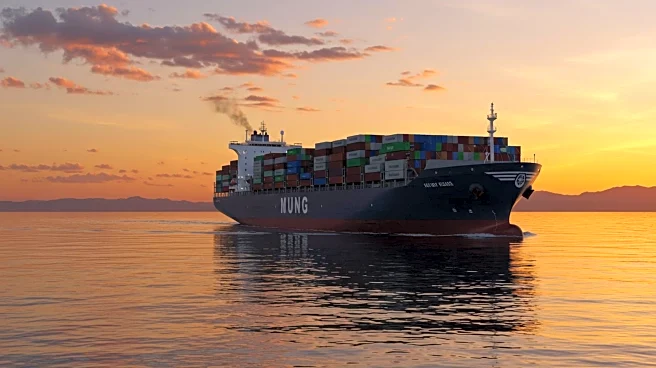Rapid Read • 7 min read
The Port of Los Angeles experienced unprecedented container volumes in July, driven by U.S. companies rushing to import goods ahead of impending tariffs on Chinese products. The port processed over 1 million twenty-foot equivalent units (TEUs), marking the highest volume in its 117-year history. This surge was a result of companies front-loading their imports to avoid tariffs, which were initially set by the Trump administration. Despite the high activity, the tariffs, set at a minimum of 30%, have impacted the ability of companies to import full orders, leading to a slowdown in peak season activities.
AD
The record-breaking import volumes at the Port of Los Angeles highlight the significant impact of tariff policies on U.S. trade and logistics. The rush to import goods before tariffs take effect underscores the challenges faced by businesses in managing supply chains amid fluctuating trade policies. This situation affects various sectors, particularly retail, which is experiencing a pullback due to increased costs. The logistics industry, including trucking and rail companies, is also impacted, as reduced volumes translate to lower revenue projections. The broader economic implications include potential shifts in consumer prices and business strategies.
With the tariff deadline extended to mid-November, companies may continue to adjust their import strategies to mitigate costs. The logistics sector will need to adapt to changing volumes and demand, potentially affecting employment and operational strategies. Further negotiations between the U.S. and China could influence future trade policies, impacting long-term business planning. Stakeholders in retail and logistics will be closely monitoring developments to navigate the evolving trade landscape.
AD
More Stories You Might Enjoy










